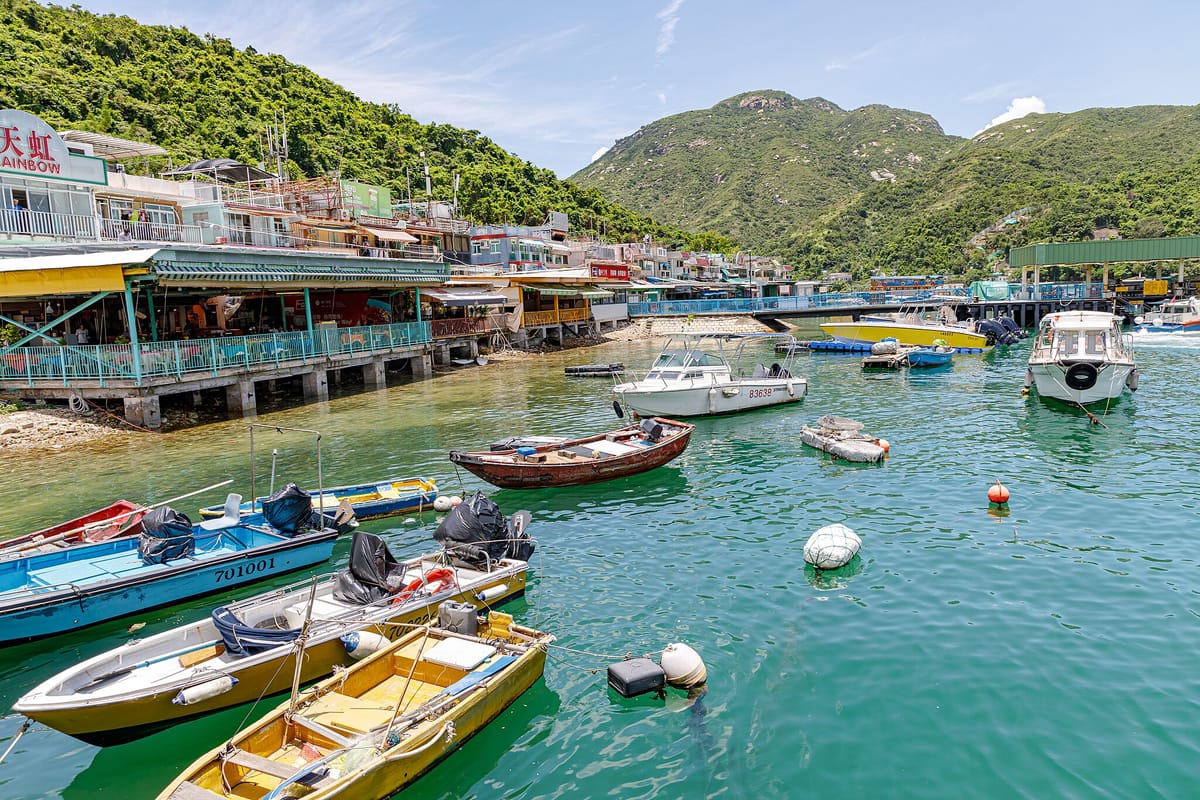Lamma Island 101 – all about Lamma Island’s history to today
Read on to learn more about Lamma Island's journey from a fishing village to a residential and tourist hub.

A few minutes every morning is all you need.
Stay up to date on the world's Headlines and Human Stories. It's fun, it's factual, it's fluff-free.
Lamma Island in Hong Kong is well-known as a tranquil oasis just a stone's throw away from the hustle and bustle of Hong Kong Island. With its fisherfolk arts and crafts on sale in village shops to fresh seafood restaurants and peaceful, East-meets-West vibes, this spot is a destination for everyone from daytrippers to history buffs. From its humble beginnings as a fishing village to its vibrant multicultural community today, Lamma Island has a rich story to tell. So, let's take a look at the area's history and uncover the secrets of this charming island.
Early Lamma Island
Lamma Island, known locally as Pok Liu Chau (博寮洲), has a history that dates back thousands of years, with evidence of human activity found in archaeological sites as far back as the Neolithic Age. During the Ming Dynasty (1368-1644), the island was a temporary base for pirates who focused their efforts on shipping routes in the South China Sea. But, it wasn't until the 17th century that people actually started to move onto the island to live. In the 19th century, Lamma Island became a strategic spot for trading because of its closeness to Hong Kong Island and its natural harbor. The island is divided into north and south sections, each with its own unique villages like Yung Shue Wan, Sok Kwu Wan and many more. Interestingly, most of the island's residents today are descendants of families originally from Guangdong, China, with surnames like Chan, Chow, Ng, Fong and Tsang.
Fast forward to the 1960s, and ferry transportation became a game-changer, with piers popping up at Yung Shue Wan and Sok Kwu Wan. Suddenly, Lamma Island became not just a remote outpost but a vibrant hub where Chinese and Western cultures mingled. The arrival of the Hong Kong Electric Co. Ltd's power station in 1978 also marked a turning point. But beyond its modern developments, Lamma Island holds a treasure trove of history, with archaeological relics found here dating back to the Neolithic Age and Western Han period, making it a hotspot for archaeological studies in Hong Kong and beyond.
Colonial era impact
After the Opium Wars, while the British claimed territories like Hong Kong Island and Kowloon, Lamma Island remained under Chinese control until 1898. That's when a decision was made to extend Hong Kong's territory, bringing Lamma Island under British rule. But, life didn't exactly speed up on Lamma afterward. Due to communication challenges, development on the island was slow. Besides the power station, there aren't many tall buildings or historical landmarks. But this has also preserved Lamma's natural beauty, making it the perfect getaway from the concrete jungle. After World War II, in particular, the agricultural and fishing industries saw a decline. But with Lamma's undisturbed beauty, there was a shift on the island toward tourism and residential development, attracting both locals and expats away from the busy city.
Fishing and industry
Let's dive into the history of Lamma Island's bread and butter: fishing and tin mining. Lamma has historically been a hub for fishermen reeling in fresh catches from the South China Sea and miners excavating treasure from its rich soil. These industries weren't just about profits; they were integral to Lamma's economy and way of life. For one, fishing has been the primary livelihood on the island for centuries, whether fisherfolk were using nets, traps or small boats. Fishing provided daily sustenance for families and stocked market stalls, while tin mining, which started developing more after the late 19th century, supported livelihoods and community growth. Together, these industries shaped Lamma's identity, contributing to its vibrant and resilient community spirit that endures today. Although tin mining isn't a big industry on Lamma anymore, you can still see traces of its history scattered across the island through abandoned mine shafts, tunnels and equipment.
Lamma Island today
Lamma is the third largest island in Hong Kong, spanning about 13.55 square kilometers and stretching over 7 kilometers in length. Picture-perfect villages dot its landscape, with Yung Shue Wan to the north, fondly known as Banyan Tree Bay, and Sok Kwu Wan to the east, aptly named Rainbow Bay for its vibrant charm. While the northern and eastern shores hum with activity, the southern part of Lamma remains tranquil, accessible mainly by hiking trails or private boat rides. Here, secluded beaches like Yung Shue Ha Beach and Sham Wan await those looking for solace amid nature's splendor. The island is most well-known these days for its laid-back vibes, beautiful beaches, hiking trails and seafood restaurants.
Lamma Island's journey from a fishing village to a residential and tourist hub reflects its rich heritage and forward-thinking approach. Once sustained by fishing and tin mining, the island now harmonizes modern development with environmental conservation and cultural preservation. Recent eco-friendly initiatives and preservation efforts maintain the island's natural allure while still embracing contemporary living. Lamma's vibrant arts scene adds to its cultural tapestry, with galleries, studios and events fostering creativity and community engagement.




Comments ()